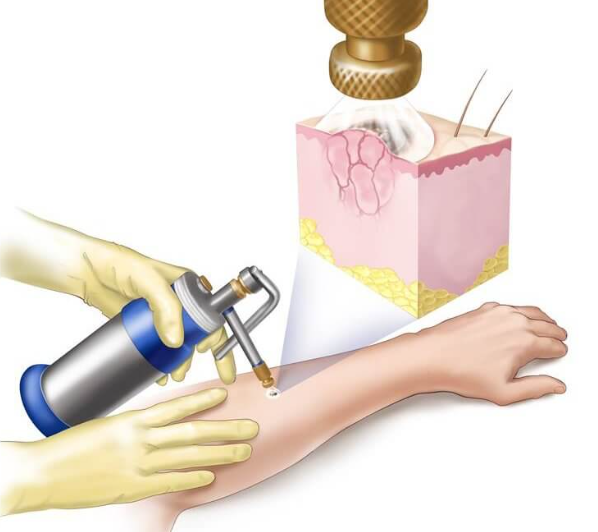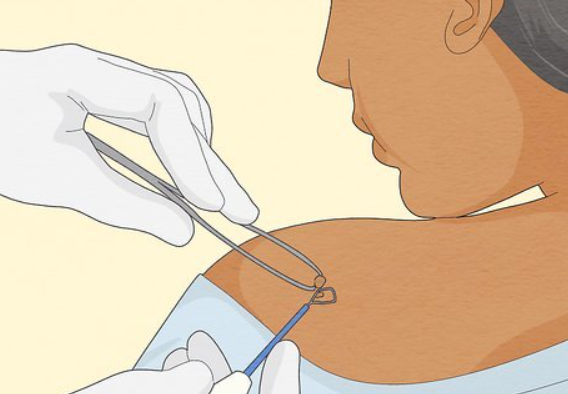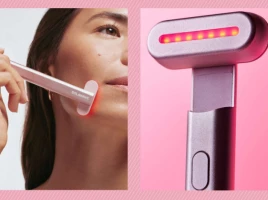Skin tags are extremely common, affecting almost half of all adults. They do not pose any health risks, but dealing with them can be an annoyance. Skin tags do not require any treatment and may fall off on their own. However, a doctor may recommend a simple medical procedure to remove any skin tags that are painful or catch on clothing. People might also want to get rid of their skin tags for cosmetic reasons, particularly if they are located on highly visible parts of the body like the face.
What Is Skin Tags: Overview
Small, fleshy growths that protrude from the skin are known as skin tags. Frequently, they are the same color as your skin. Common sites are the eyelids, neck, armpits, and groin. Skin tags are not moles and typically do not lead to cancer.
Being overweight increases the likelihood of developing skin tags. Moreover, they typically run in families. If moles are bothersome, they can be removed. Your physician can surgically remove an unsightly skin tag. However, new skin tags develop frequently.
It is impossible to overstate the significance of follow-up care to your treatment and safety. Maintain and attend all scheduled appointments, and if problems arise, contact your doctor or nurse advice line. Additionally, you should record your test results and medications.
How To Remove Skin Tags: Home Remedies
Let’s discuss how to remove skin tags! These skin lesions are usually painless unless they become entangled in jewelry or clothing. If these growths bother you, there is a solution. The following are some skin tag removal home remedies, over-the-counter products, and surgical options.
Banana Peel
Peels from stale bananas should not be thrown away, particularly if you have a skin tag. The peel of a banana can also be used to remove skin tags. This may be because of the antioxidant properties they possess. Wrap a bandage around the tag, and then place a piece of banana peel on top of it. Continue doing this each night until the tag comes off.
Skin Tag Removal Bands And Patches
A skin tag removal band severs the blood supply to the base of the skin tag. The cells die without a blood supply, and the tag falls off. This is known as ligation. Medication is contained in removal patches. A tag may become detached if a patch is left on it for several days or weeks. Dr. Mokaya, on the other hand, says, "I am not a fan of over-the-counter skin tag removal devices, particularly removal patches." They are not regulated by the Food and Drug Administration (FDA). Many simply do not work." She recommends having skin tags removed in a medical setting instead.
Tea Tree Oil
Tea tree oil, which has antiviral and antifungal properties, is safe for topical application when diluted with carrier oil. First, clean the affected area. The oil should then be massaged into the skin tag with a cotton swab or Q-tip. Overnight, wrap the wound with a bandage. Rep to this procedure every night until the tag dries out and falls off.
Vitamin E
Aging may contribute to skin tags. As vitamin E is an antioxidant that prevents wrinkles and promotes healthy skin, applying vitamin E in liquid form to a skin tag may result in its disappearance within a few days. Simply massage the oil into the mole and its vicinity until it falls off.
Apple Cider Vinegar
Use a cotton swab soaked in apple cider vinegar to rub the skin tag. Wrap a bandage around the hurt area for 15 to 30 minutes before washing the skin. Do it every day for a few weeks. The acid in apple cider vinegar breaks down the tissue around skin tags, which makes them fall off.
How Does A Dermatologist Remove Skin Tags?
Your dermatologist can remove one or more skin tags safely and effectively during an office visit, usually without the need for a follow-up visit. Your dermatologist will tell you how to treat the skin tag based on its size, location, and other factors. Your dermatologist might tell you to:
Cryosurgery
During cryosurgery, your dermatologist will use something very cold, like liquid nitrogen, to freeze the skin tag and then cut it off. When you freeze your skin, blisters and scabs can form. When the blister or scab comes off, so will the skin tag. During cryosurgery, your doctor may only freeze the base of the skin tag before cutting it off with a clean surgical blade or scissors.
Electro-desiccation
Your dermatologist will use a very fine needle to pierce the skin tag, which will result in its removal and destruction. After the treatment is finished a scab will form on the skin that was treated, and it will fall off somewhere between one and three weeks later.
Snip
After numbing the area, your dermatologist will use sterile surgical scissors or a blade to cut off the skin tag. They will then use a solution to stop the bleeding. After treatment, your dermatologist may give you aftercare instructions. This may entail removing the bandage, washing the affected area thoroughly, and applying a new bandage. To avoid complications such as infection, carefully follow your aftercare instructions.
Conclusion
Medically speaking, skin tags are generally of no concern. Once a physician has determined that a growth is benign, there is typically no need for additional treatment.
A person may consider using a home-applicable technique to remove small tags that are not located in sensitive areas. The safest option, however, is to visit a healthcare provider in a medical setting for removal. In addition, you should consult a doctor if any skin tag mutates or begins to cause complications, such as pain or bleeding.



















